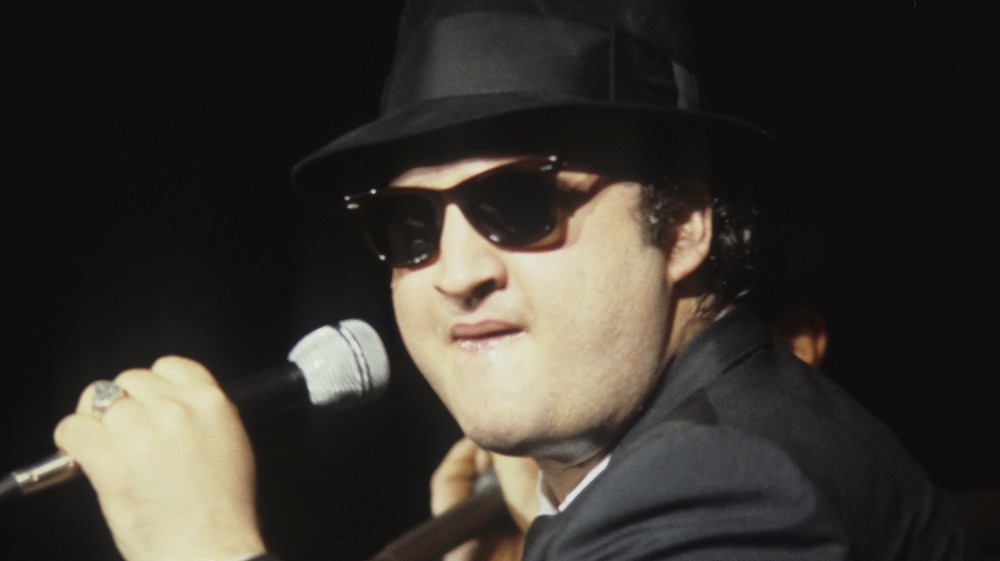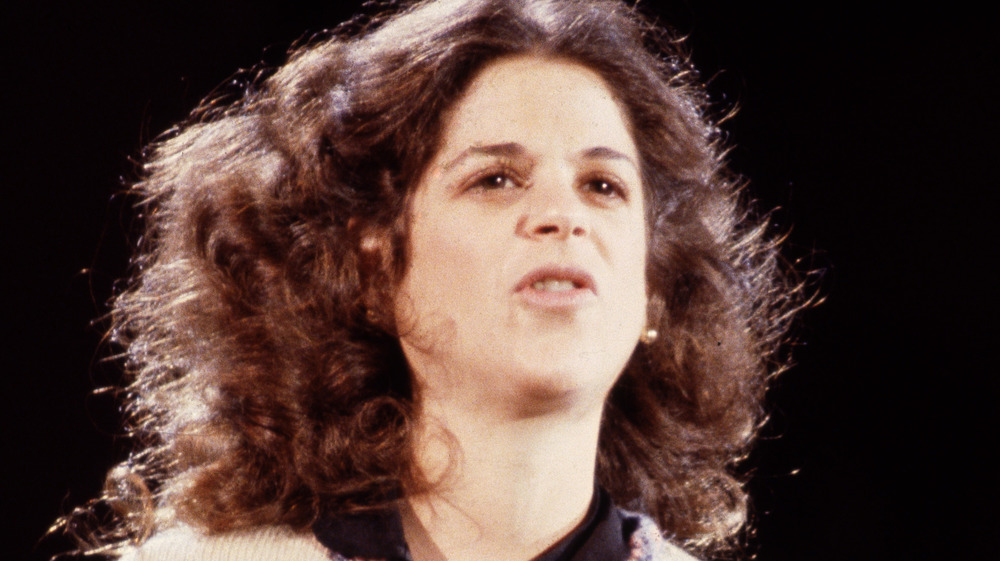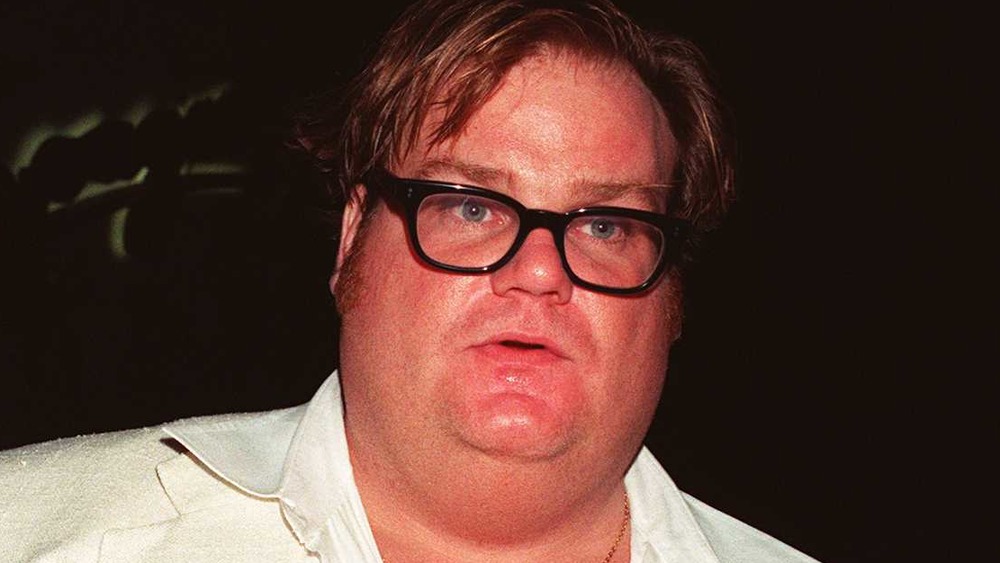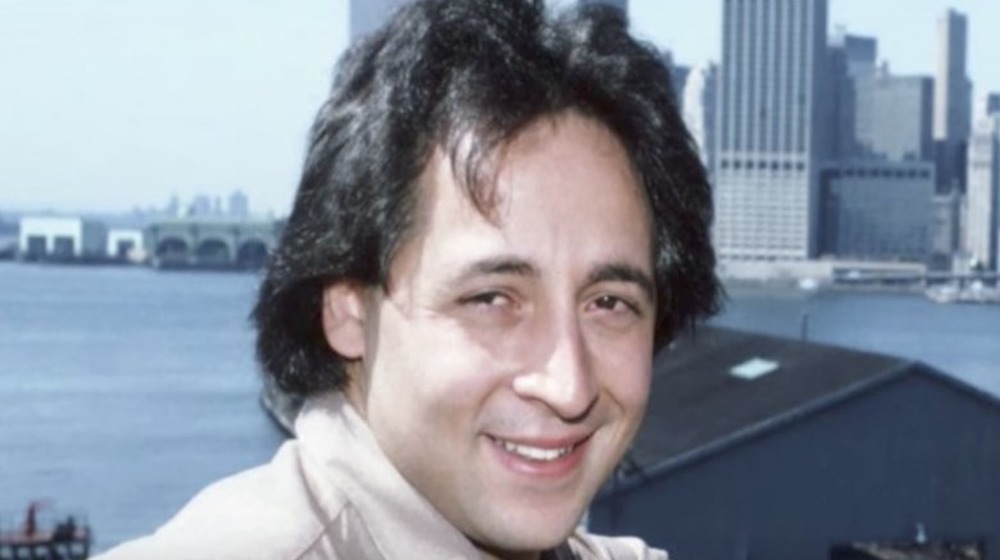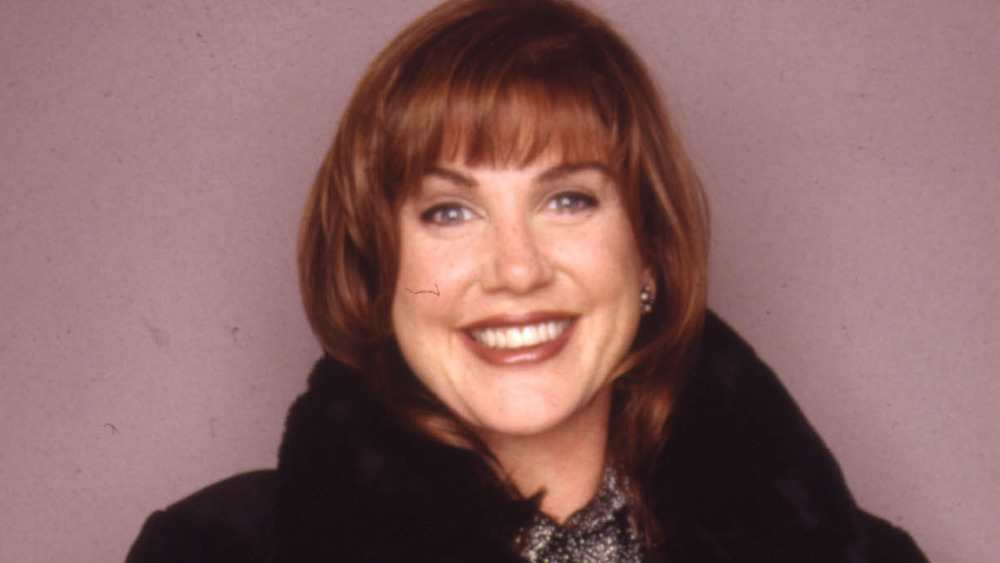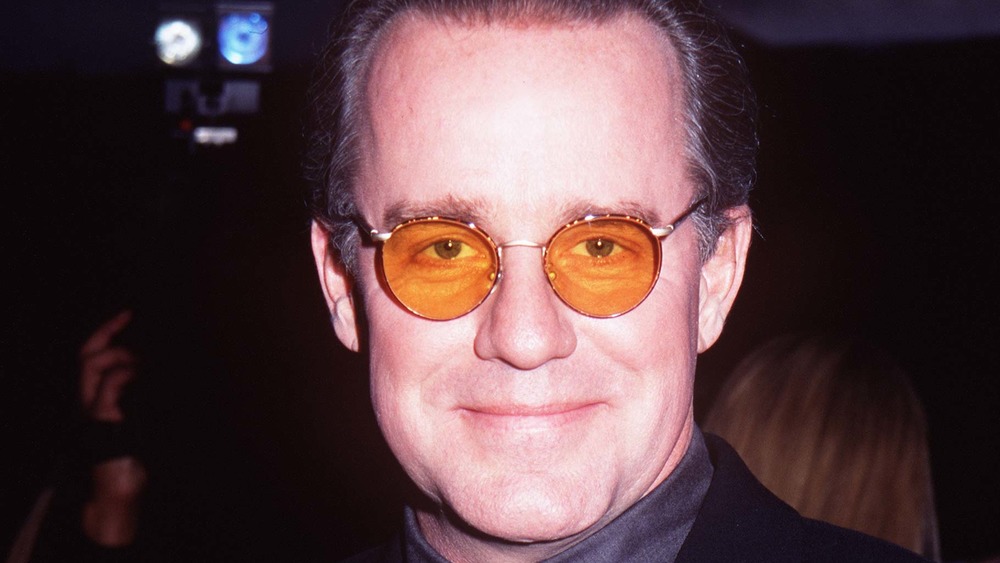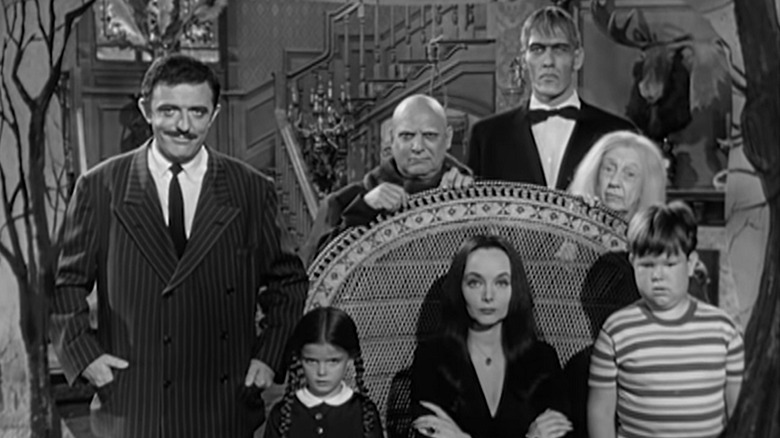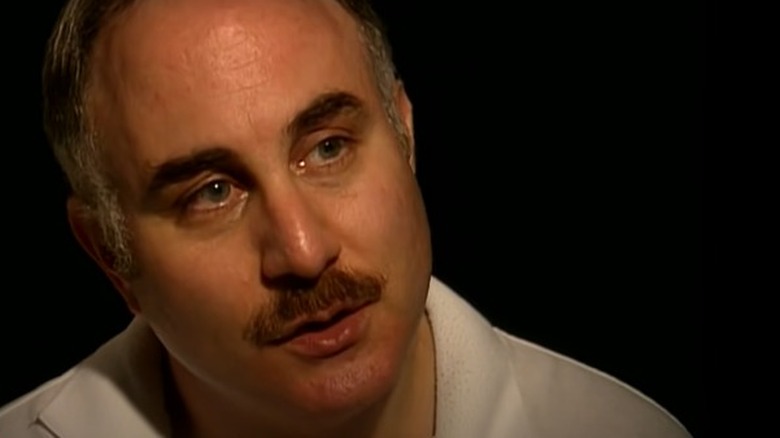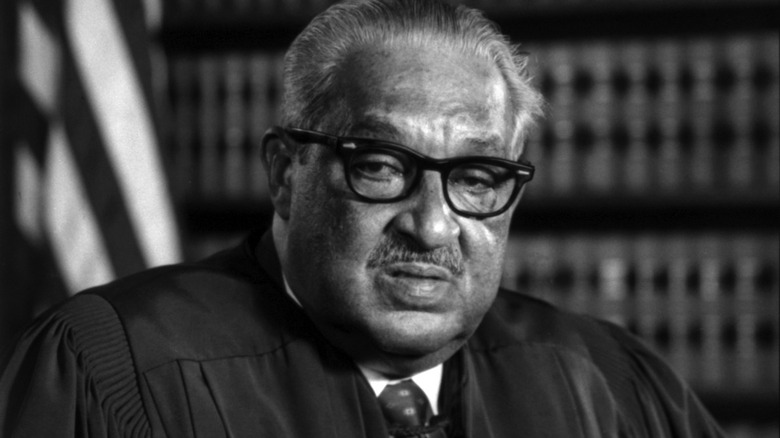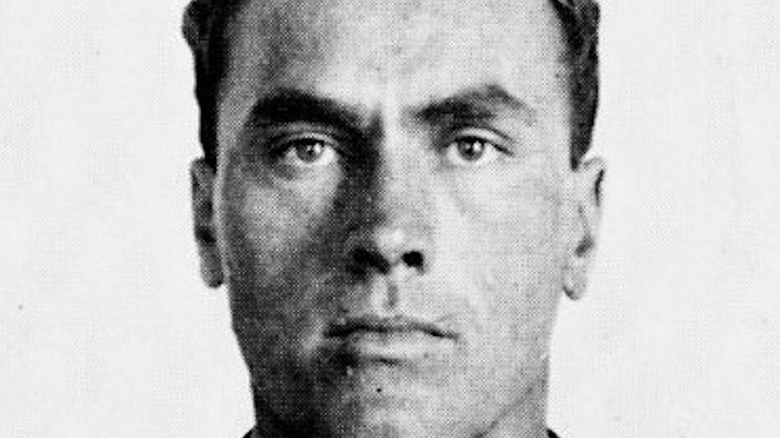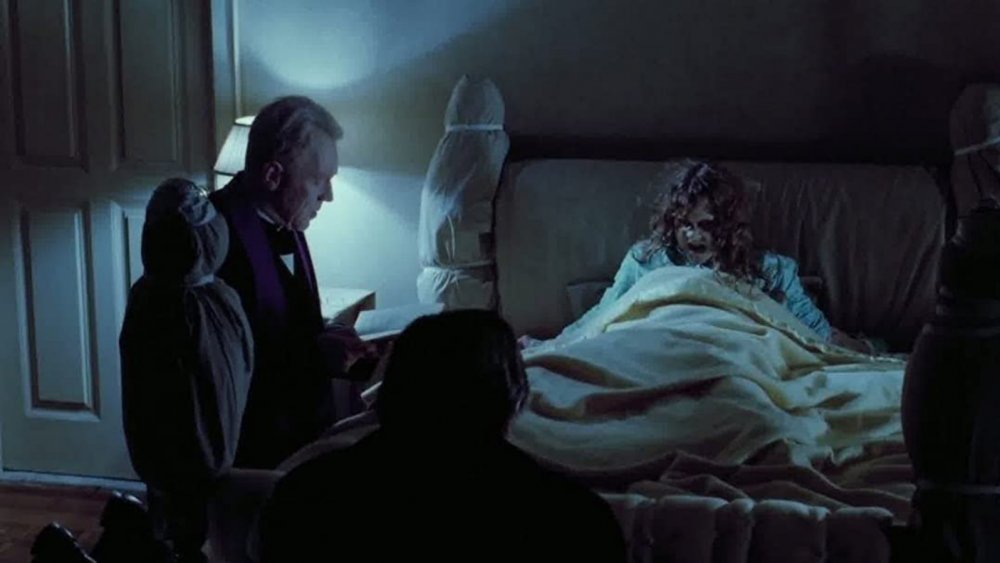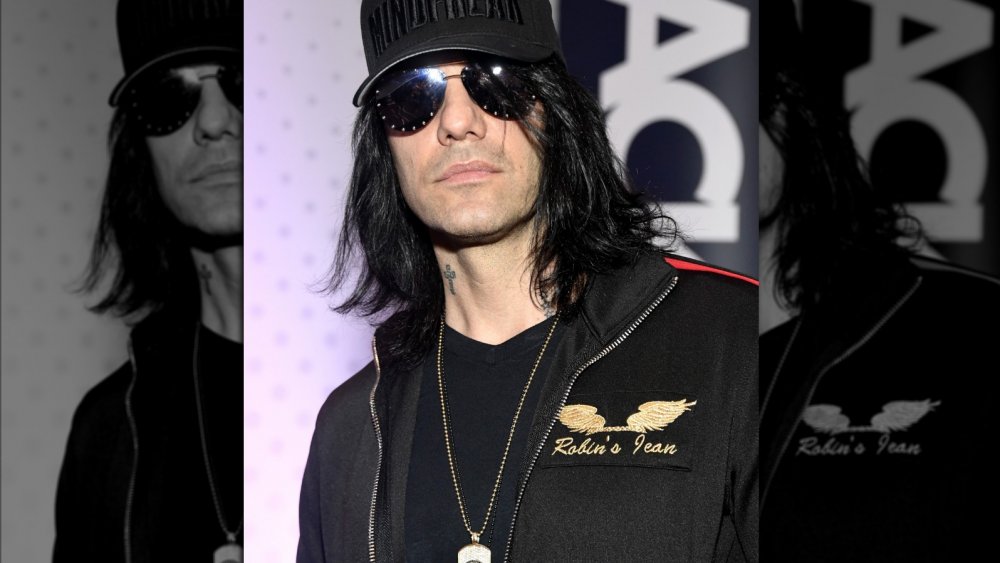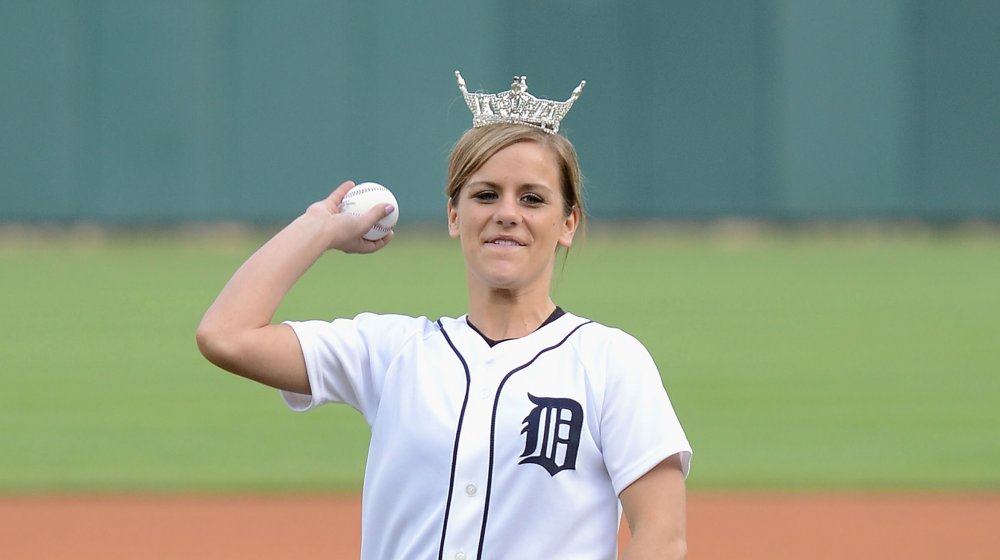
Tragic Details About The SNL Cast
There aren’t too many bonafide institutions in television, and Saturday Night Live looms large at the top of that list. Debuting in 1975, the late-night comedy showcase has been appointment viewing for millions for more than four decades. A uniquely American show, it keenly and effectively skewers and lampoons newsmakers and politicians while also providing the highest level of television sketch comedy. Landing a spot in the show’s cast is a dream for most any performer with comedic inclinations, and it can also be a springboard to superstardom. Sitcoms and comedy films would look a lot different had Lorne Michaels not launched Saturday Night Live and given a huge break to undeniable talents like Eddie Murphy, Kristen Wiig, Adam Sandler, Kate McKinnon, Will Ferrell, Dan Aykroyd, Julia Louis-Dreyfus, and literally dozens more hilarious people.
However, comedy is an art, and what do artists do but suffer so as to fuel their creativity. Sadly, that’s been the fate of many Saturday Night Live cast members. Some of the show’s most memorable and solid performers have faced more than their fair share of trauma and heartbreak. Here’s a look at the tragic off-screen lives of some SNL standouts.
Addictions got the best of John Belushi
According to Rolling Stone, John Belushi was the best SNL performer ever — the magazine ranked him the best in the show’s storied history. The argument is strong — in SNL‘s wild, silly, anarchic years, Belushi broke out big with so many characters and sketches, including a samurai stuck in modern and menial jobs, a singing bumblebee, one half of the Blues Brothers, an Olympian fueled by a diet of chocolate donuts, a Ray Charles-loving Beethoven, and a guy who ran a Greek diner that only sold cheeseburgers (and offered “no Coke, Pepsi”). It wasn’t long before Belushi was bringing his big energy to the big screen in films like National Lampoon’s Animal House, 1941, and The Blues Brothers.
Belushi wasn’t only an unbridled comic force of nature, he lived a fast, drug-filled life offscreen. His dealer, Cathy Evelyn Smith, told the National Enquirer that he was spending around $8,000 a week on cocaine by early 1982, which is when the 33-year-old Belushi died exceedingly young of drug-related causes. According to the Los Angeles Times, his body was found in a bungalow at the Chateau Marmont in West Hollywood. In Smith’s subsequent murder trial, the details of Belushi’s last night were revealed in testimony by SNL writer Nelson Lyon. He affirmed that he saw Smith inject Belushi at least once with a “speedball,” a powerful mixture of heroin and cocaine. That killed Belushi, and Smith served 15 months in prison.
Gilda Radner lost a long battle with cancer
Saturday Night Live may not have been a historic, popular hit right out of the gate without the involvement of Gilda Radner. She brought energy, silliness, and well-realized characters to the rollicking sketch show, such as the perpetually misinformed Emily Litella, the ultra geek Lisa Loopner, and a mush-mouthed Barbara Walters variant named “Baba Wawa.”
As the most charismatic and enigmatic of the original SNL cast members, major and lasting success seemed like a foregone conclusion for Radner. She left SNL in 1980, not long after Gilda Live, the filmed version of her hit Broadway showGilda Radner — Live from New York, hit movie theaters. That turned out to be one of just a few films to feature Radner.
Apart from appearing in the forgettable Haunted Honeymoon and The Woman in Red (both co-starring husband Gene Wilder), most of Radner’s time and energy were spent dealing with ovarian cancer, according to People. In the last year of her life, Radner appeared in an episode of It’s Garry Shandling’s Show (co-created by her longtime writing partner, Alan Zweibel) before dying of the disease in May 1989 at age 42. In a sad but fitting addendum, Radner passed away on a Saturday, just hours before SNL‘s season finale. Millions learned about Radner’s death from guest host Steve Martin, who replayed “Dancing in the Dark,” a touching and life-affirming sketch from 1978 where he and Radner dance throughout the SNL studio.
Chris Farley died of a drug overdose
Chris Farley will forever be a Saturday Night Live legend. Part of the cast for merely half a decade in the early 1990s, his presence and comic gifts were extremely impactful. Among the many memorable and very funny characters Farley embodied — a young woman who worked at the Gap (alongside frequent collaborators Adam Sandler and David Spade), a would-be Chippendales dancer vying for a company spot against Patrick Swayze, the quiet and starstruck host of “The Chris Farley Show,” and Matt Foley, the hopeless motivational speaker who lived “in a van down by the river.” Farley naturally and easily jumped to movies, starring in Tommy Boy, Black Sheep, and Beverly Hills Ninja.
Through it all, Farley was often at war with his demons — powerful addictions to alcohol and drugs. Between 1995 and 1997, according to Entertainment Weekly, Farley entered rehab 17 times, all to little or no avail. According to The Chris Farley Show, producers on his final movie, Almost Heroes, assigned a special guard to Farley to ensure his sobriety during filming. According to an SNL crew member who spoke with Rolling Stone, Farley was “looped” when he showed up to host an episode of the show in October 1997, which opened with a sketch making light of Farley’s attempts to stay sober. Farley lost the war on Dec. 18, 1997. After reportedly going on a four-day drug bender, the 33-year-old actor was discovered dead in his Chicago apartment.
Pete Davidson's father was a 9/11 first responder
Pete Davidson isn’t like most other SNL cast members. While most have extensive experience in sketch comedy by the time they join the show, Davidson was a stand-up comic with a scant few acting credits when he signed on in 2014. And he also wasn’t in his late 20s or early 30s like his SNL brethren — Davidson was just 20 years old, one of the youngest cast members in show history, reports Entertainment Tonight. He quickly proved to be an adept and agile performer, acting in sketches, generating recurring characters (particularly Chad, an inexplicably desirable monosyllabic dummy), and making regular appearances on “Weekend Update” ostensibly as himself to offer commentary and stories about his life, including a discussion of his history with substance abuse.
Davidson was raised on Staten Island, New York, just like the loosely autobiographical character he played in the 2020 film The King of Staten Island. Davidson portrayed a young adult named Scott, struggling to get his life started, in part because he’s emotionally stunted after suffering a childhood tragedy — his father, a New York City firefighter, died in the line of duty. That mirrors Davidson’s real life. According to Sky News, firefighter Scott Davidson died in the aftermath of the 9/11 attacks in 2001, when Pete Davidson was just 7 years old (via People).
Maya Rudolph lost her mother when she was a baby
Before her dazzling voice work on Big Mouth and physical comedy prowess in Bridesmaids, Maya Rudolph wowed audiences as one of the most versatile performers on Saturday Night Live history. A member of the cast from 2000 to 2007, she played everyone from Michelle Obama to a middle school TV show host to Donatella Versace. Rudolph didn’t have only comedy acting chops, she could sing, and her pipes lent credibility to her impressions of Whitney Houston, Beyoncé, and Diana Ross.
Rudolph is a second-generation celebrity and musician. Her father is Richard Rudolph, a musician who produced the 1974 album Perfect Angel, by soul singer Minnie Riperton. It included the No. 1 hit single, “Lovin’ You,” co-written by Richard Rudolph and featuring Riperton’s almost supernatural ability to sing some of the highest notes of which the human voice is capable of producing. Richard Rudolph and Riperton were also a married couple, and the song was written as a lullaby for their baby daughter, Maya. At the end of the album version of the song, Riperton’s seemingly improvised vocalizations are actually her singing “Maya” repeatedly, as per uDiscoverMusic.
Riperton would score a few more hits on the Billboard R&B chart, but in 1976 she was diagnosed with breast cancer. Despite undergoing a surgical mastectomy to stop the cancer’s spread, the disease continued to move, and Riperton lost her bottle with cancer at age 31 in July 1979, just two weeks before daughter Maya turned 7 years old.
Tina Fey was attacked outside her house when she was a kid
Tina Fey possesses one of the funniest, most acclaimed, most era-defining comedy minds of the 21st century, co-creatingUnbreakable Kimmy Schmidt, writing the film and musical version of Mean Girls, and starring on the zany, behind-the-scenes-of-a-TV-show 30 Rock. Fey won an acting and multiple writing Emmys for her work on the sitcom, loosely based on her time as the head writer of Saturday Night Live, where she also held down the illustrious “Weekend Update” co-anchor spot for six years. She’s probably best known for a role she played after she’d already left the show, that of boisterous 2008 vice-presidential candidate Sarah Palin. (It’s Fey as Palin, not Palin herself, who uttered the famous line, “I can see Russia from my house!”)
When Fey was 5 years old and growing up in Upper Darby, Penn., the future comedian was attacked by a knife-wielding assailant. “It was in, like, the front yard of her house, and somebody who just came up, and she just thought somebody marked her up with a pen,” Fey’s husband and collaborator Jeff Richmond told Vanity Fair (via the Chicago Tribune). “I proceeded unaware of it,” Fey said. “It’s really almost like I’m kind of able to forget about it, until I was on-camera.” Fey still carries a faint scar from the encounter on her left cheek, which is why on 30 Rock, she was almost always shot from the right side.
Sarah Silverman nearly died in 2016
Sarah Silverman is one of the most popular and influential comedians of the 21st century — as well as the co-creator and Emmy-nominated star of the inventive and surreal The Sarah Silverman Program — but she first popped up on the comedy radar in the early 90s as a barely used, one-season-wonder featured player on Saturday Night Live. Appearing occasionally as a correspondent on “Weekend Update” or to impersonate a celebrity in a sketch, SNL just wasn’t the place for Silverman to thrive. She has since developed her own unique style of sometimes profane, sometimes philosophical, and sometimes political comedy in specials like Jesus is Magic and the Hulu talk show, I Love You, America.
All the exceptional comedy nearly ended prematurely in 2016 when, according to a post on her Facebook page, Silverman nearly died. After seeing a doctor about what felt like a relatively innocuous sore throat, Silverman learned she had “a freak case of epiglottitis,” an inflammation of the flap at the back of the mouth that makes sure food doesn’t go into the windpipe. Her treatment and recovery proved difficult. Because of excessively low blood pressure, doctors couldn’t fully sedate the comedian, so she was “drugged just enough to not feel the pain,” along with her hands placed in restraints because she was so dazed and confused she tried to pull out her life-assisting breathing tube. “When I woke up 5 days later I didn’t remember anything,” Silverman wrote.
Charles Rocket took his own life
In 1980, SNL creator and hands-on producer Lorne Michaels left the series, and NBC entrusted the show to Jean Doumanian, who brought in a number of new cast members, including Charles Rocket, touted on air as “a cross between Chevy Chase and Bill Murray,” as per AV Club. In the 1980-81 season, Rocket proved himself to be a talent to watch with “The Rocket Report,” a series of silly, absurd “man on the street” bits.
He’s probably most famous (or notorious) for the Feb. 21, 1981, episode of SNL. Parodying Dallas‘s “Who Shot J.R.?” plot, an unidentified gunman attempts to murder Rocket. The “Who Shot C.R.?” arc ended during the show’s sign-off, where host Charlene Tilton (of Dallas) sat in Rocket’s lap as he sat in a wheelchair. Tilton asked how it felt to be shot, and Rocket replied, “Ah, man, it’s the first time I’ve ever been shot in my life. I’d like to know who the f*** did it.”
Saying the F-word on network television is a major violation of FCC rules, and within weeks, Rocket had lost his spot on SNL, reports Entertainment Weekly. In the 80s and 90s, he built up a strong resume playing smug jerks and evil yuppies in comedy films like Earth Girls are Easy and Dumb and Dumber and dads in fare like Hocus Pocus. Tragically, in 2005, Rocket’s body was found not far from his Connecticut home. According to People, the medical examiner’s office ruled the death a suicide. Rocket was 56.
If you or anyone you know is having suicidal thoughts, please call the National Suicide Prevention Lifeline at 1-800-273-TALK (8255).
Darrell Hammond's childhood was full of abuse and terror
Saturday Night Live brought on a slew of new cast members in the fall of 1995, including little-known comedian and voiceover artist Darrell Hammond. A show that routinely skewers politicians, celebrities, and public figures needs actors who can convincingly and hilariously imitate those people, and for 14 years Hammond was SNL‘s go-to-guy, a master impressionist who provided uncanny portrayals of Bill Clinton, Al Gore, Regis Philbin, Ted Koppel, Donald Trump, Dick Cheney, and Sean Connery (as an Alex Trebek-hating “Celebrity Jeopardy” contestant). After leaving SNL in 2009 and landing some supporting roles on TV and in movies, Hammond returned to the show in 2014 as the show’s announcer, replacing the recently deceased Don Pardo, reports Variety.
Hammond was a late bloomer, joining SNL at age 39 and after a harrowing young life. Hammond told CNN that as a child, his mother would regularly stab, beat, and electrically shock him. By age 19, he’d started cutting. According to his documentary, Cracked Up (via Vulture), by age 27 he was also drinking excessively, and a psychiatrist diagnosed him with bipolar disorder and schizophrenia and had him institutionalized. That’s where Hammond, faced with endless free and alone time, started developing his voice skills. Although he was prescribed a lengthy list of mood stabilizing drugs, Hammond still struggled with mental health and would cut himself backstage at SNL, and on occasion, was taken from the studio to a psychiatric ward in a straitjacket.
Tony Rosato faced mental health challenges and died young
In the early 1980s, Saturday Night Live needed new performers, and producers sought out ready-for-TV talent by seizing upon the competition, the Canadian-produced sketch show Second City Television. Along with costar Robin Duke, Tony Rosato defected to SNL in 1981. Once in the cast, however, he didn’t appear in too many sketches, fighting for screen time with the show’s comedically and physically similar breakout star, Joe Piscopo. While he did develop a moderately popular recurring character, radio host Vic Salukin, Rosato was not asked to return to SNL for another season.
Rosato was a reliable presence on American and Canadian TV for the next couple of decades — he voiced Luigi on animated Super Mario Bros. projects and starred on the long-running crime show Night Heat, for example. But in 2005, Rosato made headlines over a sharp decline in his mental health. According to the Toronto Star, Rosato made a panicked call to police, convinced that his wife, Leah, and baby had been replaced by imposters. (That’s a telltale symptom of Capgras syndrome, a condition with which Rosato was diagnosed.)
Rosato was arrested and charged with criminal harassment, for which he spent two years in prison and then another two in a psychiatric institution. Upon his release in 2009, he attempted to get his life and career back on track, only for his health to take another turn. In January 2017, the 62-year-old actor passed away after suffering a heart attack, reports The New York Times.
Cancer hit Julia Sweeney and her brother almost simultaneously
Julia Sweeney was one of Saturday Night Live‘s most prominent cast members in the early 1990s. Along with impressions of celebrities (Chelsea Clinton, Jane Pauley) and singers (Ethel Merman, Petula Clark), Sweeney had a few breakout characters, such as Dame Sarah Kensington, but most notably, Pat Riley, an off-putting whiner whose gender was comically and aggressively ambiguous. (Sweeney apologized for playing Pat in a New York Times interview in 2019.)
In August 1994, Sweeney starred in It’s Pat, her first major film and based on her breakout SNL character. Critics universally reviled the film, which earned $60,822 at the box office, but that wasn’t nearly the worst thing that happened to Sweeney that summer. According to the Los Angeles Times, Sweeney’s brother, Mike, learned that he was suffering from a terminal case of lymphatic cancer. His sister then moved him into her home, where she became his full-time, live-in caregiver. For nine months, Julia Sweeney cared for her brother, until the spring of 1995, when he died at age 31. However, just two weeks before that cancer-related death, Sweeney received her own devastating medical news — a cervical cancer diagnosis. After an aggressive plan, including a hysterectomy and months of experimental radiation treatments, Sweeney was cancer-free within the year.
Phil Hartman was murdered in his sleep
At Saturday Night Live, where he was a cast member from 1985 to 1994, Phil Hartman was known as “The Glue” because he was such a reliably excellent and central performer in most any sketch in which he appeared. Hartman exceeded at both impressions (Ronald Reagan, Bill Clinton, Frank Sinatra) and original characters (the Anal Retentive Chef, Frankenstein’s monster, the Unfrozen Caveman Lawyer).
In 1987, Hartman married his third wife, model and actress Brynn Omdahl. The marriage was often tense and tenuous, with the couple loudly fighting backstage at SNL, and according to friends, they were headed for divorce. Phil Hartman spent a fortune on boats and a plane and would leave his wife and two young kids to go hang out on Catalina Island. Brynn Hartman faced substance abuse issues, developing an addiction to cocaine in the 1980s, which she quit using until suffering a relapse in 1997.
The marriage ended, and tragically, in May 1998. According to the Los Angeles Times, police arrived at the Hartmans’ home in Encino, California, after receiving a report of shots fired. They found nine-year-old Sean Hartman fleeing the house, and after escorting him to safety, authorities got six-year-old Birgen Hartman out as well. Around that time, another gunshot sounded — later determined to be a self-inflicted blow which killed 40-year-old Brynn Hartman. An investigation determined that the earlier shot had killed Phil Hartman, 49.
If you or anyone you know is having suicidal thoughts, please call the National Suicide Prevention Lifeline at 1-800-273-TALK (8255).

The Untold Truth Of The Flaming Lips

Snapped: What You Didn't Know About The True Crime Hit
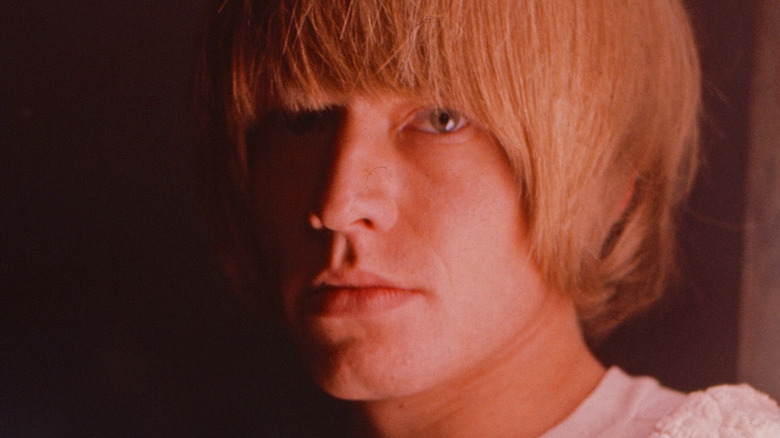
Rock Stars Who Fell Into Tragedy After Getting Fired From The Band
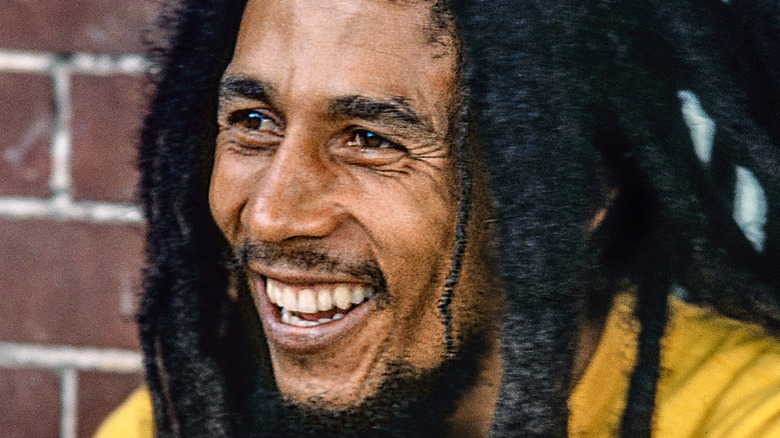
The Surprising Items Bob Marley Is Buried With
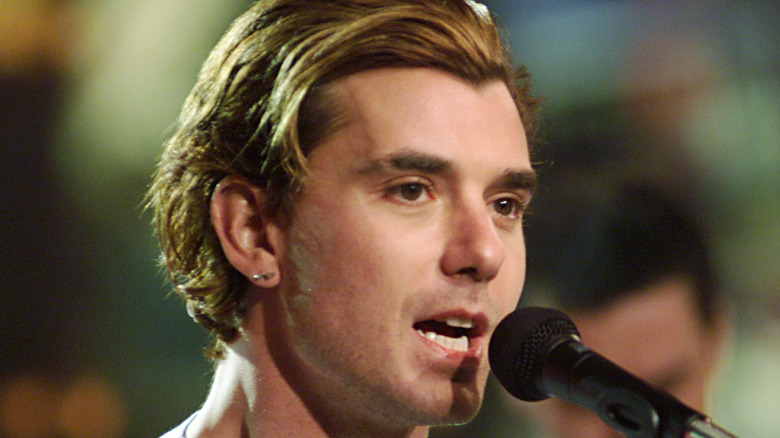
How A Misheard Bush Lyric Led To A One-Hit Wonder
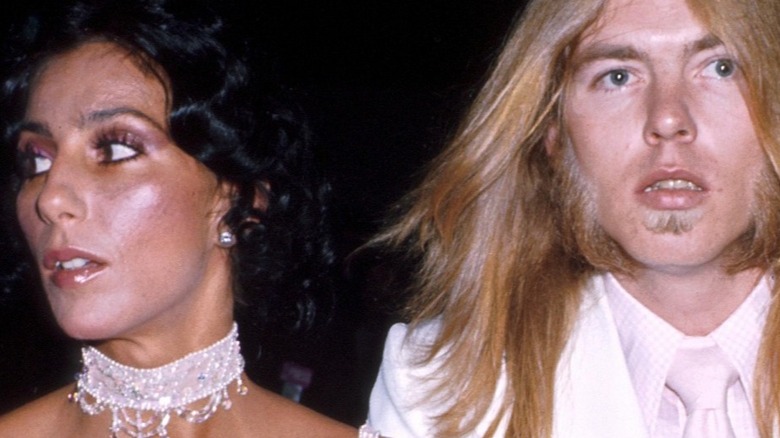
A Look At Cher And Gregg Allman's Relationship

Here's Who Won The Most Individual Oscars In History

The Truth About Snoop Dogg And Suge Knight's Feud

The Untold Truth Of Paul Newman

Tragic Details About The SNL Cast
